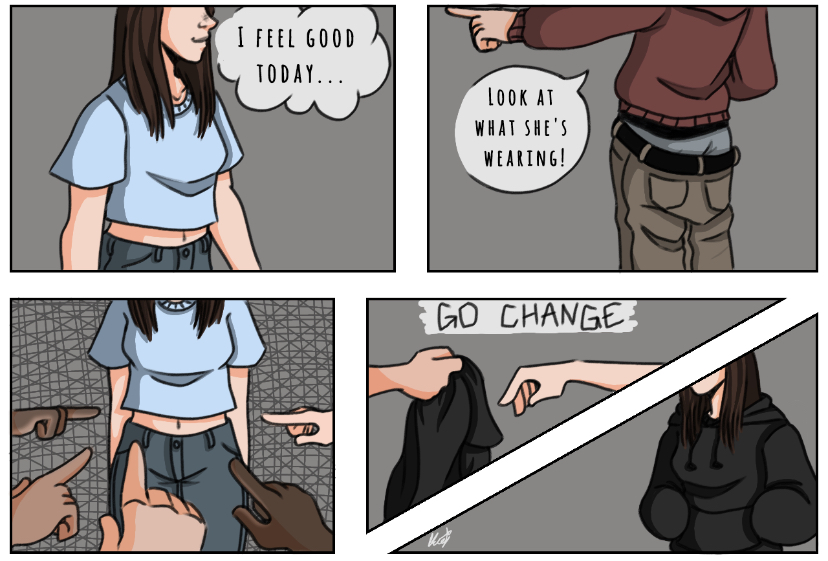Opinion: School dress codes target young girls
Digital illustration by Kristin Starr.
Do those shorts go down to your fingertips? Is that tank top four fingers wide? Is your bra strap showing? Girls as young as six or seven years old are already learning that their legs and shoulders are a distraction. For so long, schools have reserved the right to a dress code, but unfortunately, these codes have come across as unfair and sexist. These rules disproportionately target young women and it teaches them that they are responsible for the actions of other people.
Although dress codes are mandatory for a functioning school, stricter codes diminish a girl’s self-esteem, and they excessively target women of color and plus-sized women, and are more distracting to females than to the males.
To start with, the mandate of those codes can diminish a girl’s self-esteem. According to Time Magazine, there have been instances in multiple schools where female students reported having to flap their arms up and down to see if their shirts were long enough, bend over to see if their skirts or shorts had a proper length, or even having to rummage through the lost and found for a jacket to put over a shirt. These checks are humiliating at best and unethical at worst. Not only can this be traumatizing for girls, but it can make them feel ashamed of their bodies.
“For me, it’s about shaming girls about their bodies,” says Julia Bond, a parent who was involved at a protest at New Haven Middle school, “It’s this message across genders that girls have to cover up, and teachers saying to girls, the reason for this rule is so that boys aren’t distracted.”
Women live in a society that tells them that what they wear dictates whether they are respected, and schools are just perpetuating that narrow mindset. Secondly, women lose a lot of learning time in the classroom because of these dress codes. When girls get kicked out of class or suspended, it leaves them less time for learning than their male counterparts. One example of this was when a female honor student in a public high school in South Carolina was suspended, and almost arrested, because she was wearing an over-the-shoulder top that violated code.
Some might say that a woman’s clothing may be distracting to others, but it is the school’s responsibility to stop pushing the narrative that a girl’s body is a distraction. One solution to this problem is to make the dress code less strict, and teach boys how to be accountable for the way they respond to girls.
Women have always been taught that they are the problem, but the real problem that a society that starts to objectify women as early as six years old.











